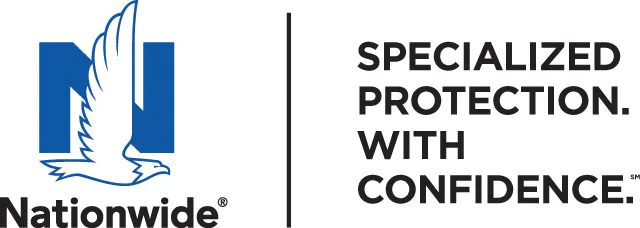Attracting new talent — Rethinking your hiring strategies
Finding and servicing clients in an ever-changing environment can be a large enough obstacle in itself for insurance agencies. Now increased hiring challenges have recently mounted on top of existing pressures. As agencies strive to find the employees they need to ensure successful operations, it’s no surprise that the nature of the employment market and best practices for hiring have changed.
Understanding current hiring challenges
As unemployment rates trend toward pre-pandemic levels, insurance agencies aren’t alone when it comes to hiring challenges. Both the U.S. general unemployment rate2 and the insurance industry’s unemployment rate have decreased during 2021 after reaching record highs at the initial onset of the COVID-19 pandemic. As such, here are some common hiring challenges facing insurance agencies today:
- Meeting the increasing demands of workers—Agencies are finding themselves in a candidate-driven employment market, which has drastically changed traditional hiring practices. Labor shortages across industries mean that candidates have many options and the ability to increase their employment demands to align with their job priorities. The main job priorities of today’s workforce—including that of the insurance sector—widely vary, but there are some common desires. These priorities include: 3 4
- Working in a safe workplace amid the COVID-19 pandemic
- Having workplace flexibility (e.g., remote work and flexible scheduling)
- Getting career advancement opportunities
- Receiving competitive benefits and perks
- Working for an employer that values diversity and inclusion
- Working for an employer with similar values as their own
- Finding workers with specific skill sets—Attracting job candidates isn’t simply a numbers game; many insurance agencies are looking for talent with specific skill sets. Currently, many agencies are focusing on technology integration within their operations, thus utilizing more digital applications and virtual tools than ever before. As a result, having a workforce with technical skills has become increasingly necessary for insurance agencies to effectively execute and extract value from their current technology-driven business models.
- Attracting the next generation of workers—The U.S. workforce is rapidly aging. In fact, the share of employees over the age of 55 is expected to rise to nearly 25% by 2024.5 As many older workers retire, insurance agencies have struggled to attract a new generation of workers. While offering workplace flexibility is one way for agencies to attract younger workers, this is not a one-size-fits-all solution. After all, 40% of college students and recent graduates still prefer in-person work, while others want to work either in a hybrid model (39%) or remotely (19%).6
Understanding current hiring challenges and what prospective employees are looking for can help inform insurance agencies on how to adjust their hiring strategies to meet the needs of today’s workforce and attract top talent.
Adjusting hiring strategies
As insurance agencies strive to understand trends that may influence the employment market, the actionable next step is adopting a hiring strategy that aligns with the desires of prospective employees. Now is the time for agencies to view hiring as a core part of their business operations, as hiring goes hand-in-hand with overall agency strategy and success.
Here are some ways that insurance agencies can rethink their hiring strategies:
- Expand talent pools. Remote and hybrid work arrangements may not have been a big part of many agencies’ operations prior to the pandemic, but determining whether employees will be eligible to work remotely (or not) is a critical factor that will influence recruiting and hiring strategies within the insurance sector. While remote work isn’t feasible for all positions, it’s essential to consider such arrangements when developing hiring strategies. Offering remote work options can help insurance agencies broaden their talent pools, allowing them to recruit in new markets. Remote work options may even help establish more diverse candidate pools, as agencies may have fewer geographical restrictions regarding who they can recruit. On a similar note, insurance agencies should consider how they can adjust employment offerings to cater to under-employed populations and help broaden their talent pools. For example, older workers who may still be out of a job due to the impacts of COVID-19 may require special arrangements to return to the workforce.7
- Prioritize agency branding. An agency brand is the employment market’s perception of the organization as an employer. Seventy-two percent of worldwide recruiting leaders agreed that branding significantly impacts hiring. Strong agency branding can result in various benefits, including a lower cost per hire, more qualified applicants and—in some cases—lower turnover rates. Insurance agencies can take steps to improve their brand by highlighting the strengths of their workplaces, consistently addressing the needs of today’s workforce and using a range of channels to connect with their candidate pools.8
- Evaluate a university recruiting strategy. As institutions provide new graduates year-round, universities can help insurance agencies find younger workers and fill technology-related skill set needs. Partnering with universities can often be mutually beneficial, as agencies can consider steps such as attending career fairs, posting on job boards and developing relationships with career services.
- Address employee caregiving challenges. Many employees (both current and prospective) have caregiving challenges that can limit their overall job flexibility—a reality that has become increasingly prevalent since the initial onset of the COVID-19 pandemic. Providing employees with child care assistance or creating partnerships with day care or after-school services can yield a high return on investment for agencies. To that end, offering scheduling flexibility or remote work options can allow many employees to work for insurance agencies while still meeting their personal needs.
- Create a candidate-driven hiring and onboarding process. If agencies’ recruitment processes aren’t user-friendly, candidates may explore alternative options. Such processes can include how candidates apply for job roles, submit resumes and interview for positions. Candidates should be able to engage in these processes through a variety of mediums. For example, younger employees are more likely to apply to agencies that accept both in-person and online resume submissions. These processes may even extend to the onboarding experience. As a key part of the hiring process, the hiring and onboarding experience is an employee’s first look at an agency’s culture, and it should also focus on preparing a new employee to succeed.
The need to implement these initiatives and the feasibility of doing so will vary by agency. In any case, these initiatives can help insurance agencies properly navigate the current employment market and develop a skilled, successful workforce.

